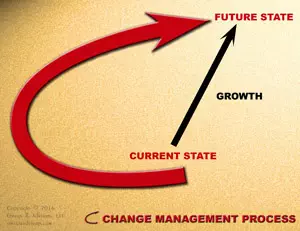10 Common Mistakes When Using a Change Management Process
Having an answer to “What is change management?” helps in selecting a change management process. There is almost a different process for each change management consultant. Some use more than one.
Ten Common Mistakes
Even though the number of change management processes boggles the mind, there are common mistakes in using all. Some do not even help us avoid these mistakes:
- Missing a change management strategy to support the process
- Inadequately assessing organizational culture and office politics
- Mismatching the change management process to the strategy
- Making the change management process too much of a process
- Failing to refresh or strengthen relationships between management and employees
- Inefficient use of training and communication dollars
- Shortchanging internal communication campaign
- Adding complexity to the process (scope creep)
- Failing to change how managers work with their teams
- Focusing too much on groups at expense of individuals

Which change management process will best fit the firm’s business culture and office politics?
How These Mistakes Appear in a Change Management Process
Often developing a strategy is part of a change management process. This is all right as long as selecting a process is also a step. There are many ways to manage change. That is why there are so many different processes. Processes are tools. We use the tools that fit our strategy. Otherwise, a mismatch occurs.
Organizational culture and office politics drive the change management process selection. That means an honest, comprehensive assessment of them. This will prevent selecting a process that is too complex or too much of a process.
Fulfilling the process cannot be more important than the change itself. We often see this when there is too much attention paid to such things as mission, vision, strategy and process.
We also see it when change management processes do not treat culture, relationships, training and communications as major steps. In reality, these areas consume the most time in change management. Most of these efforts need to be put into motion before a strategy is formally announced.
This usually means internal communication campaigns suffer. The process becomes more complex as stakeholders add their own bent to it. The focus is on process and not on how managers must work differently with their people.
Processes are tools. Processes become better if we motivate people to use them well. The best way to do this is to focus on individuals, not groups. Individuals are the key to changing groups. Focus on processes causes us to forget this.
Which change management process is best for your firm?


